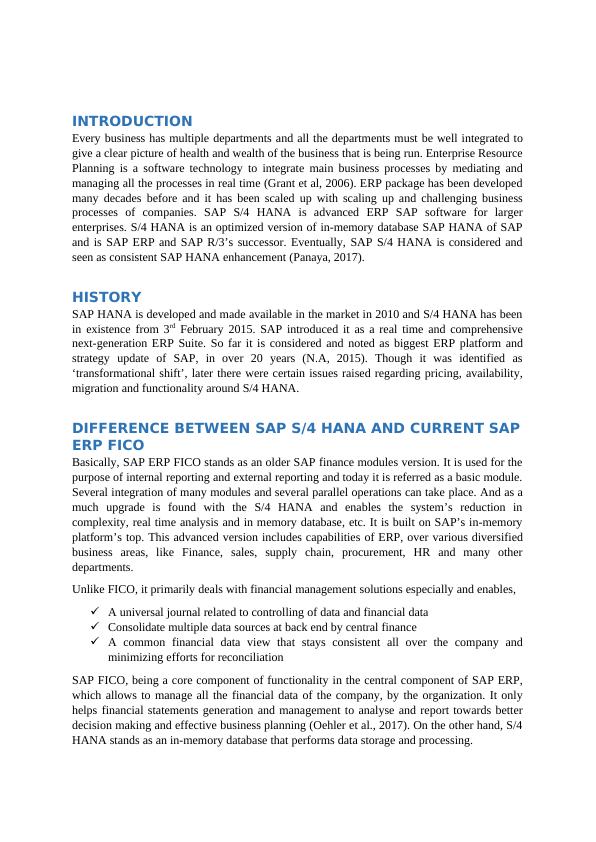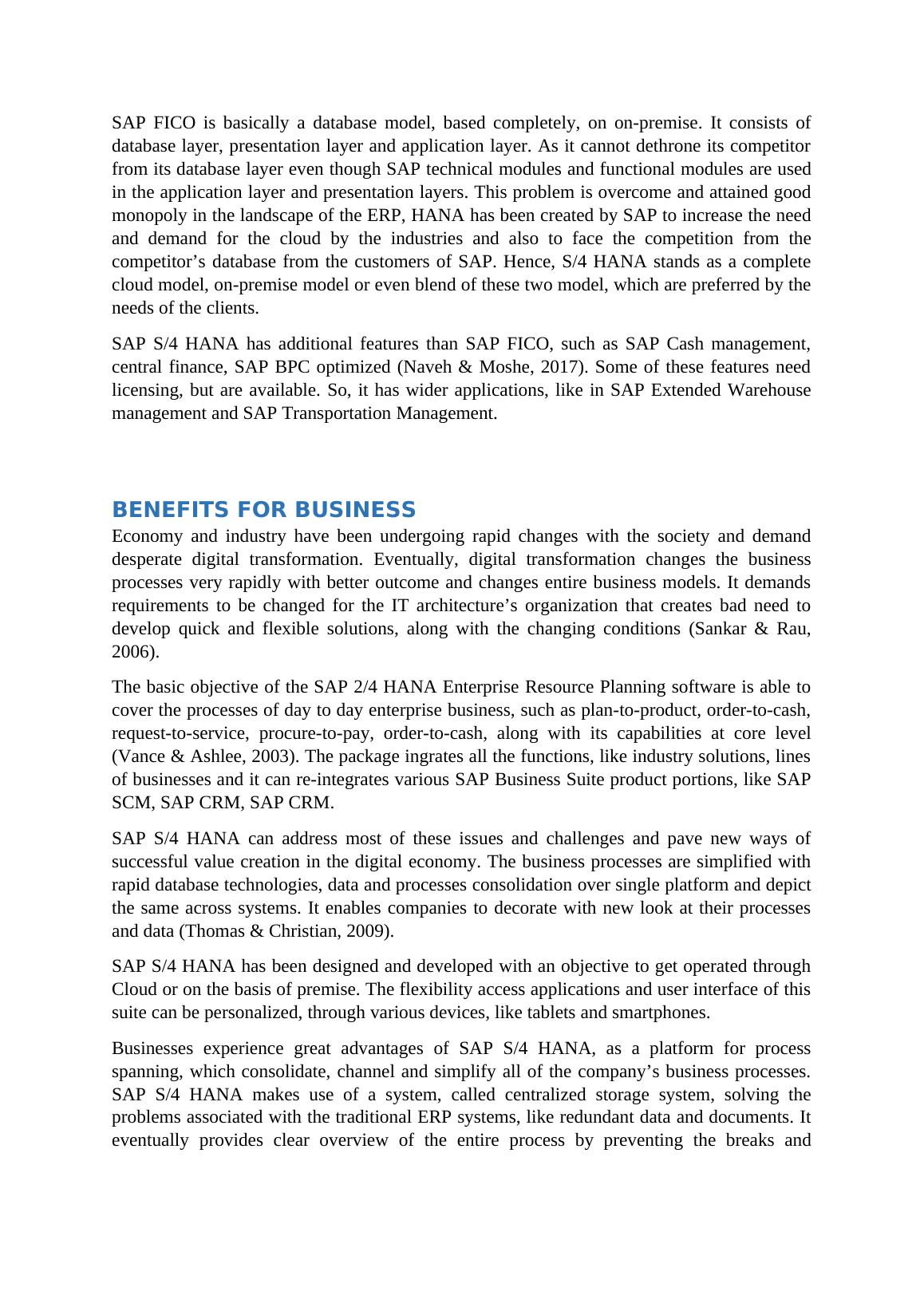Computerized Accounting in ERP
Added on 2023-01-12
12 Pages4376 Words27 Views
qwertyuiopasdfghjklzxcvbnmqw
ertyuiopasdfghjklzxcvbnmqwert
yuiopasdfghjklzxcvbnmqwertyu
iopasdfghjklzxcvbnmqwertyuio
pasdfghjklzxcvbnmqwertyuiopa
sdfghjklzxcvbnmqwertyuiopasd
fghjklzxcvbnmqwertyuiopasdfg
hjklzxcvbnmqwertyuiopasdfghj
klzxcvbnmqwertyuiopasdfghjklz
xcvbnmqwertyuiopasdfghjklzxc
vbnmqwertyuiopasdfghjklzxcvb
nmqwertyuiopasdfghjklzxcvbn
mqwertyuiopasdfghjklzxcvbnm
qwertyuiopasdfghjklzxcvbnmqw
ertyuiopasdfghjklzxcvbnmqwert
yuiopasdfghjklzxcvbnmqwertyu
iopasdfghjklzxcvbnmrtyuiopasd
fghjklzxcvbnmqwertyuiopasdfg
COMPUTERIZED ACCOUNTING
IN ERP
Statistics
6/10/2019
ertyuiopasdfghjklzxcvbnmqwert
yuiopasdfghjklzxcvbnmqwertyu
iopasdfghjklzxcvbnmqwertyuio
pasdfghjklzxcvbnmqwertyuiopa
sdfghjklzxcvbnmqwertyuiopasd
fghjklzxcvbnmqwertyuiopasdfg
hjklzxcvbnmqwertyuiopasdfghj
klzxcvbnmqwertyuiopasdfghjklz
xcvbnmqwertyuiopasdfghjklzxc
vbnmqwertyuiopasdfghjklzxcvb
nmqwertyuiopasdfghjklzxcvbn
mqwertyuiopasdfghjklzxcvbnm
qwertyuiopasdfghjklzxcvbnmqw
ertyuiopasdfghjklzxcvbnmqwert
yuiopasdfghjklzxcvbnmqwertyu
iopasdfghjklzxcvbnmrtyuiopasd
fghjklzxcvbnmqwertyuiopasdfg
COMPUTERIZED ACCOUNTING
IN ERP
Statistics
6/10/2019

Contents
INTRODUCTION...................................................................................................... 3
HISTORY................................................................................................................. 3
DIFFERENCE BETWEEN SAP S/4 HANA AND CURRENT SAP ERP FICO.....................3
BENEFITS FOR BUSINESS....................................................................................... 4
CASE STUDY 1....................................................................................................... 5
Migration Specifics............................................................................................. 5
Project Plan......................................................................................................... 5
Migration Tools................................................................................................... 6
SUM (Software Update Manager)........................................................................6
BW Transformation Finder..................................................................................7
Key Challenges................................................................................................... 7
Establishing DMO Migration Runbook.................................................................7
Best Practices Followed...................................................................................... 7
CASE STUDY 2....................................................................................................... 8
FGC..................................................................................................................... 8
MIGRATION NEED TO SAP S/4 HANA...................................................................8
Solution.............................................................................................................. 8
Challenges and Issues During Migration.............................................................9
Impact Analysis.................................................................................................. 9
Impacted Objects............................................................................................... 9
Test Acceleration................................................................................................ 9
Results.............................................................................................................. 10
CONCLUSION....................................................................................................... 10
REFERENCES........................................................................................................ 10
INTRODUCTION...................................................................................................... 3
HISTORY................................................................................................................. 3
DIFFERENCE BETWEEN SAP S/4 HANA AND CURRENT SAP ERP FICO.....................3
BENEFITS FOR BUSINESS....................................................................................... 4
CASE STUDY 1....................................................................................................... 5
Migration Specifics............................................................................................. 5
Project Plan......................................................................................................... 5
Migration Tools................................................................................................... 6
SUM (Software Update Manager)........................................................................6
BW Transformation Finder..................................................................................7
Key Challenges................................................................................................... 7
Establishing DMO Migration Runbook.................................................................7
Best Practices Followed...................................................................................... 7
CASE STUDY 2....................................................................................................... 8
FGC..................................................................................................................... 8
MIGRATION NEED TO SAP S/4 HANA...................................................................8
Solution.............................................................................................................. 8
Challenges and Issues During Migration.............................................................9
Impact Analysis.................................................................................................. 9
Impacted Objects............................................................................................... 9
Test Acceleration................................................................................................ 9
Results.............................................................................................................. 10
CONCLUSION....................................................................................................... 10
REFERENCES........................................................................................................ 10

INTRODUCTION
Every business has multiple departments and all the departments must be well integrated to
give a clear picture of health and wealth of the business that is being run. Enterprise Resource
Planning is a software technology to integrate main business processes by mediating and
managing all the processes in real time (Grant et al, 2006). ERP package has been developed
many decades before and it has been scaled up with scaling up and challenging business
processes of companies. SAP S/4 HANA is advanced ERP SAP software for larger
enterprises. S/4 HANA is an optimized version of in-memory database SAP HANA of SAP
and is SAP ERP and SAP R/3’s successor. Eventually, SAP S/4 HANA is considered and
seen as consistent SAP HANA enhancement (Panaya, 2017).
HISTORY
SAP HANA is developed and made available in the market in 2010 and S/4 HANA has been
in existence from 3rd February 2015. SAP introduced it as a real time and comprehensive
next-generation ERP Suite. So far it is considered and noted as biggest ERP platform and
strategy update of SAP, in over 20 years (N.A, 2015). Though it was identified as
‘transformational shift’, later there were certain issues raised regarding pricing, availability,
migration and functionality around S/4 HANA.
DIFFERENCE BETWEEN SAP S/4 HANA AND CURRENT SAP
ERP FICO
Basically, SAP ERP FICO stands as an older SAP finance modules version. It is used for the
purpose of internal reporting and external reporting and today it is referred as a basic module.
Several integration of many modules and several parallel operations can take place. And as a
much upgrade is found with the S/4 HANA and enables the system’s reduction in
complexity, real time analysis and in memory database, etc. It is built on SAP’s in-memory
platform’s top. This advanced version includes capabilities of ERP, over various diversified
business areas, like Finance, sales, supply chain, procurement, HR and many other
departments.
Unlike FICO, it primarily deals with financial management solutions especially and enables,
A universal journal related to controlling of data and financial data
Consolidate multiple data sources at back end by central finance
A common financial data view that stays consistent all over the company and
minimizing efforts for reconciliation
SAP FICO, being a core component of functionality in the central component of SAP ERP,
which allows to manage all the financial data of the company, by the organization. It only
helps financial statements generation and management to analyse and report towards better
decision making and effective business planning (Oehler et al., 2017). On the other hand, S/4
HANA stands as an in-memory database that performs data storage and processing.
Every business has multiple departments and all the departments must be well integrated to
give a clear picture of health and wealth of the business that is being run. Enterprise Resource
Planning is a software technology to integrate main business processes by mediating and
managing all the processes in real time (Grant et al, 2006). ERP package has been developed
many decades before and it has been scaled up with scaling up and challenging business
processes of companies. SAP S/4 HANA is advanced ERP SAP software for larger
enterprises. S/4 HANA is an optimized version of in-memory database SAP HANA of SAP
and is SAP ERP and SAP R/3’s successor. Eventually, SAP S/4 HANA is considered and
seen as consistent SAP HANA enhancement (Panaya, 2017).
HISTORY
SAP HANA is developed and made available in the market in 2010 and S/4 HANA has been
in existence from 3rd February 2015. SAP introduced it as a real time and comprehensive
next-generation ERP Suite. So far it is considered and noted as biggest ERP platform and
strategy update of SAP, in over 20 years (N.A, 2015). Though it was identified as
‘transformational shift’, later there were certain issues raised regarding pricing, availability,
migration and functionality around S/4 HANA.
DIFFERENCE BETWEEN SAP S/4 HANA AND CURRENT SAP
ERP FICO
Basically, SAP ERP FICO stands as an older SAP finance modules version. It is used for the
purpose of internal reporting and external reporting and today it is referred as a basic module.
Several integration of many modules and several parallel operations can take place. And as a
much upgrade is found with the S/4 HANA and enables the system’s reduction in
complexity, real time analysis and in memory database, etc. It is built on SAP’s in-memory
platform’s top. This advanced version includes capabilities of ERP, over various diversified
business areas, like Finance, sales, supply chain, procurement, HR and many other
departments.
Unlike FICO, it primarily deals with financial management solutions especially and enables,
A universal journal related to controlling of data and financial data
Consolidate multiple data sources at back end by central finance
A common financial data view that stays consistent all over the company and
minimizing efforts for reconciliation
SAP FICO, being a core component of functionality in the central component of SAP ERP,
which allows to manage all the financial data of the company, by the organization. It only
helps financial statements generation and management to analyse and report towards better
decision making and effective business planning (Oehler et al., 2017). On the other hand, S/4
HANA stands as an in-memory database that performs data storage and processing.

SAP FICO is basically a database model, based completely, on on-premise. It consists of
database layer, presentation layer and application layer. As it cannot dethrone its competitor
from its database layer even though SAP technical modules and functional modules are used
in the application layer and presentation layers. This problem is overcome and attained good
monopoly in the landscape of the ERP, HANA has been created by SAP to increase the need
and demand for the cloud by the industries and also to face the competition from the
competitor’s database from the customers of SAP. Hence, S/4 HANA stands as a complete
cloud model, on-premise model or even blend of these two model, which are preferred by the
needs of the clients.
SAP S/4 HANA has additional features than SAP FICO, such as SAP Cash management,
central finance, SAP BPC optimized (Naveh & Moshe, 2017). Some of these features need
licensing, but are available. So, it has wider applications, like in SAP Extended Warehouse
management and SAP Transportation Management.
BENEFITS FOR BUSINESS
Economy and industry have been undergoing rapid changes with the society and demand
desperate digital transformation. Eventually, digital transformation changes the business
processes very rapidly with better outcome and changes entire business models. It demands
requirements to be changed for the IT architecture’s organization that creates bad need to
develop quick and flexible solutions, along with the changing conditions (Sankar & Rau,
2006).
The basic objective of the SAP 2/4 HANA Enterprise Resource Planning software is able to
cover the processes of day to day enterprise business, such as plan-to-product, order-to-cash,
request-to-service, procure-to-pay, order-to-cash, along with its capabilities at core level
(Vance & Ashlee, 2003). The package ingrates all the functions, like industry solutions, lines
of businesses and it can re-integrates various SAP Business Suite product portions, like SAP
SCM, SAP CRM, SAP CRM.
SAP S/4 HANA can address most of these issues and challenges and pave new ways of
successful value creation in the digital economy. The business processes are simplified with
rapid database technologies, data and processes consolidation over single platform and depict
the same across systems. It enables companies to decorate with new look at their processes
and data (Thomas & Christian, 2009).
SAP S/4 HANA has been designed and developed with an objective to get operated through
Cloud or on the basis of premise. The flexibility access applications and user interface of this
suite can be personalized, through various devices, like tablets and smartphones.
Businesses experience great advantages of SAP S/4 HANA, as a platform for process
spanning, which consolidate, channel and simplify all of the company’s business processes.
SAP S/4 HANA makes use of a system, called centralized storage system, solving the
problems associated with the traditional ERP systems, like redundant data and documents. It
eventually provides clear overview of the entire process by preventing the breaks and
database layer, presentation layer and application layer. As it cannot dethrone its competitor
from its database layer even though SAP technical modules and functional modules are used
in the application layer and presentation layers. This problem is overcome and attained good
monopoly in the landscape of the ERP, HANA has been created by SAP to increase the need
and demand for the cloud by the industries and also to face the competition from the
competitor’s database from the customers of SAP. Hence, S/4 HANA stands as a complete
cloud model, on-premise model or even blend of these two model, which are preferred by the
needs of the clients.
SAP S/4 HANA has additional features than SAP FICO, such as SAP Cash management,
central finance, SAP BPC optimized (Naveh & Moshe, 2017). Some of these features need
licensing, but are available. So, it has wider applications, like in SAP Extended Warehouse
management and SAP Transportation Management.
BENEFITS FOR BUSINESS
Economy and industry have been undergoing rapid changes with the society and demand
desperate digital transformation. Eventually, digital transformation changes the business
processes very rapidly with better outcome and changes entire business models. It demands
requirements to be changed for the IT architecture’s organization that creates bad need to
develop quick and flexible solutions, along with the changing conditions (Sankar & Rau,
2006).
The basic objective of the SAP 2/4 HANA Enterprise Resource Planning software is able to
cover the processes of day to day enterprise business, such as plan-to-product, order-to-cash,
request-to-service, procure-to-pay, order-to-cash, along with its capabilities at core level
(Vance & Ashlee, 2003). The package ingrates all the functions, like industry solutions, lines
of businesses and it can re-integrates various SAP Business Suite product portions, like SAP
SCM, SAP CRM, SAP CRM.
SAP S/4 HANA can address most of these issues and challenges and pave new ways of
successful value creation in the digital economy. The business processes are simplified with
rapid database technologies, data and processes consolidation over single platform and depict
the same across systems. It enables companies to decorate with new look at their processes
and data (Thomas & Christian, 2009).
SAP S/4 HANA has been designed and developed with an objective to get operated through
Cloud or on the basis of premise. The flexibility access applications and user interface of this
suite can be personalized, through various devices, like tablets and smartphones.
Businesses experience great advantages of SAP S/4 HANA, as a platform for process
spanning, which consolidate, channel and simplify all of the company’s business processes.
SAP S/4 HANA makes use of a system, called centralized storage system, solving the
problems associated with the traditional ERP systems, like redundant data and documents. It
eventually provides clear overview of the entire process by preventing the breaks and

End of preview
Want to access all the pages? Upload your documents or become a member.
Related Documents
Computerized Accounting Systems (PDF)lg...
|12
|3660
|348
Computerized Accounting in ERP Systemslg...
|17
|4085
|496
Computerised Accounting in an ERPlg...
|18
|4313
|324
Research Report on SAP S/4HANAlg...
|14
|4683
|156
Computerized Accounting in ERP Systemslg...
|14
|4640
|99
Computerized Accounting in ERPlg...
|17
|3906
|97
